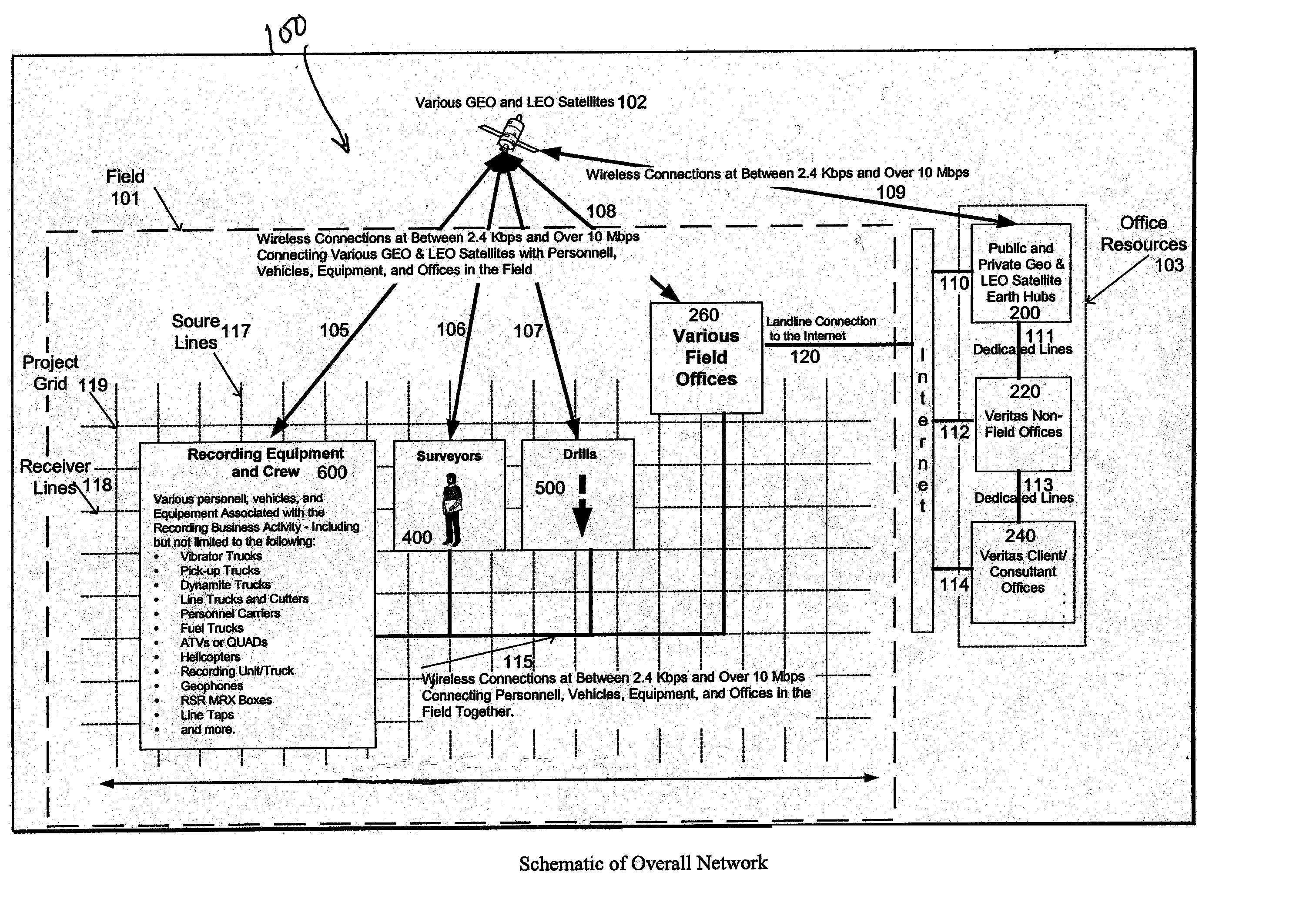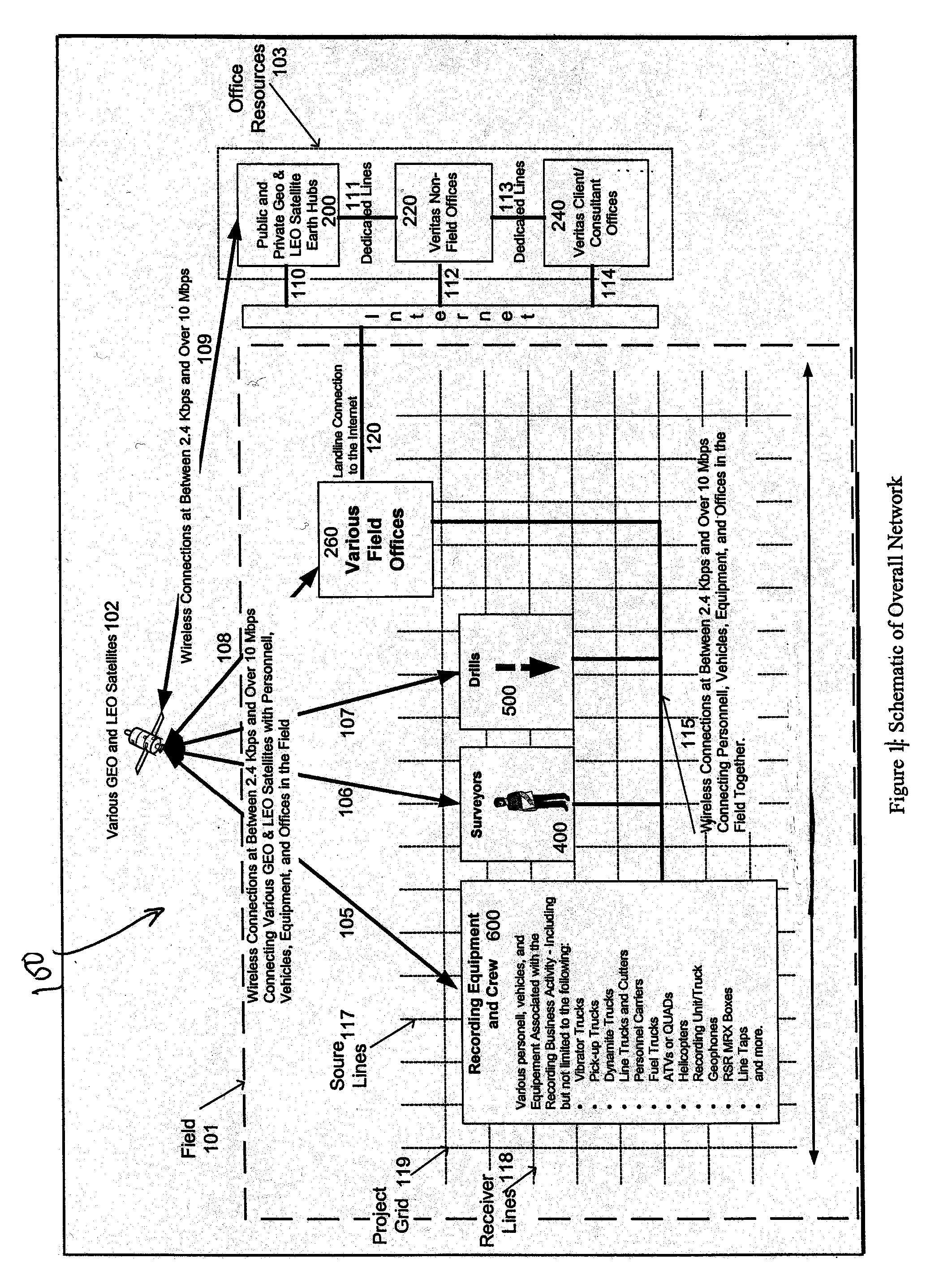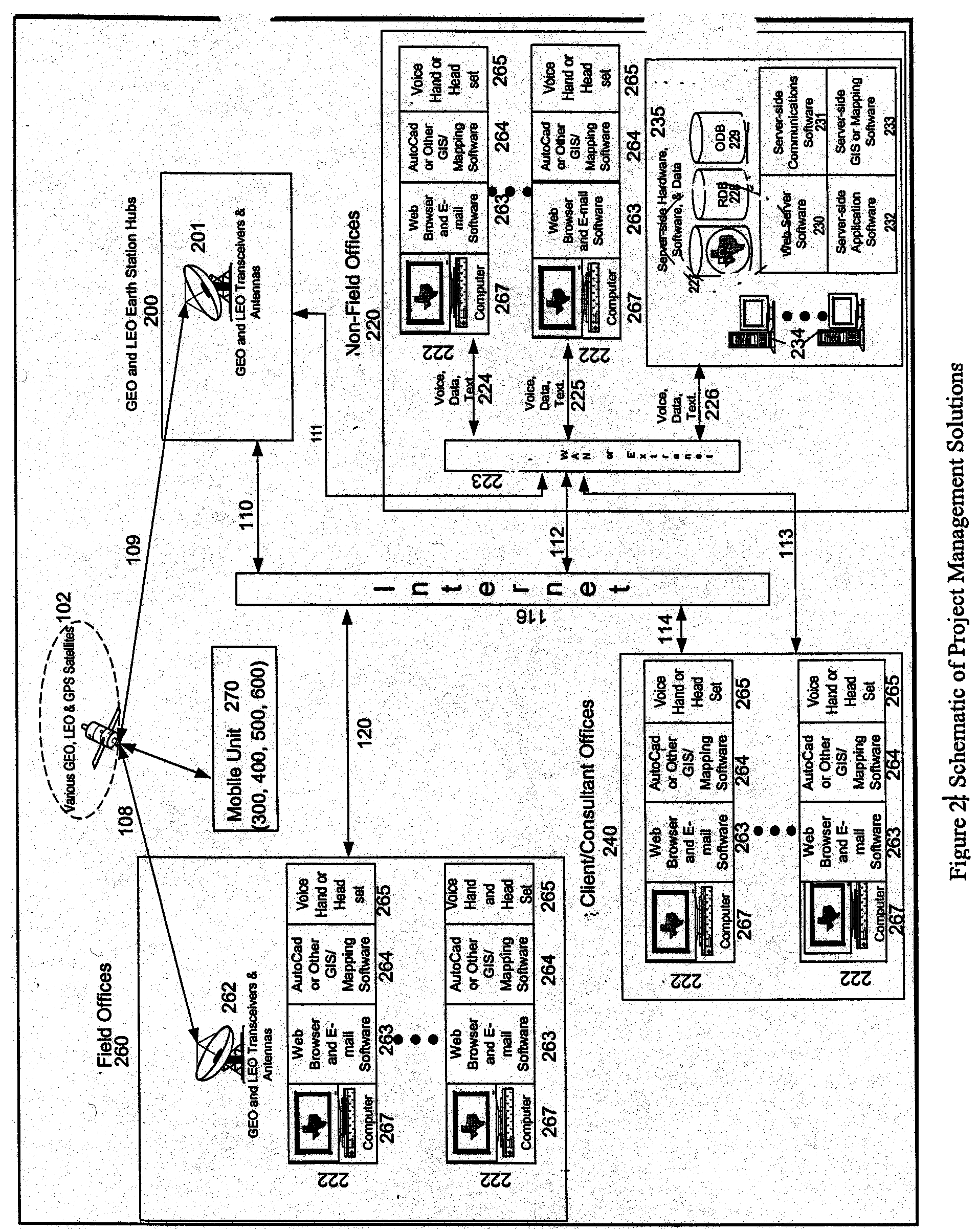Periodically, equipment malfunctions.
Managing the field resources, however, becomes increasingly problematic as the size of the
project area increases.
Using the pre-plot coordinates and standard, albeit not highly accurate positioning techniques, the field personnel estimate the location in the field corresponding to the pre-plot coordinate.
Unfortunately, it is rarely possible to position the source and
receiver equipment exactly at the pre-plot coordinates.
Ponds, roads, and other obstructions not shown on the maps used by the survey designers may prevent the equipment from being positioned where specified by the survey.
Additionally, even though GPS provides accurate positioning data, the actual location of the equipment still may not exactly match the pre-plot coordinates because of inaccuracies in the GPS
system and / or lack of skill in the personnel using the GPS system.
At times, GPS equipment may malfunction and personnel may make blunders thereby resulting in erroneous coordinates for the source and recorder points.
Any discrepancy between the actual and pre-plot coordinates may
impact the interpretation of the resulting seismic data.
The
time lag occurs because communication of data from the field to the home office is not efficient.
The inefficiency results from the lack of an electronic communications infrastructure between the field and the office environment.
Considerable and undesirable time and expense is associated with reshooting a
record or resurveying a point for which equipment must be brought back and set up again.
Bird dogs are usually highly trained and expensive resources that add to the cost of the
seismic survey.
Without bird dogs, however, the
client has little insight into the activity in the field as it occurs.
Further,
poor quality and / or outdated maps contribute to errors in the design of the survey.
Field personnel, for example, may update a map, but there may be a considerable
time lag before the updates are provided to the experts in the home office.
Further, the inability to accurately track equipment causes inefficiencies in the coordination of mobile units and people.
Inefficient tracking of mineral rights and land ownership information associated with permitting is another problem in the
project management area driving up the cost of the survey.
If a different
client wishes to survey the same area, that
client, or its survey company, must undesirably repeat the same research into ownership and permit issues.
Further, scattering such skilled personnel across the globe at various seismic project sites does not permit the beneficial sharing of information between the various skilled professionals.
Mobilization and demobilization of equipment and personnel has its own set of problems.
For instance, conventional seismic operations do not have a highly accurate, efficient mechanism for tracking the location of the equipment including the vehicles to transport the equipment.
It thus is difficult to keep track of transportation vehicles, some of which may still be loading equipment from a previous job while other vehicles are deploying equipment to the next job site hundreds of miles away.
The inability to accurately and inefficiently track equipment makes
inventory control problematic.
One piece of equipment may be stolen or misplaced and not noticed as missing for several days.
Additionally, conventional mobilization and demobilization systems do not provide a mechanism for accurately monitoring the time field personnel actually spend working, thereby potentially creating inaccuracies in client billing.
Shortcomings in the surveying phase include excessive waste of time and money having to re-stake points when the
surveyor or geophysicist reviews the QC data and determines that a particular surveyed point or shot
record must be rerun.
As noted above, the increased costs includes bringing equipment back to the site of the original shot
record, setting up the equipment again, and repositioning the point or rerunning the shot record.
This process may cost 2 to 3 times the cost of the initial record.
In addition, typical seismic survey systems force field personnel to repetitively enter and log the same data leading to longer survey times at higher cost to the client.
Not only is this a
time consuming and expensive process, considerable room for error exists because of the repeated human involvement with the
data entry.
Surveying problems also include a lack of real-time integrity monitoring available to the client.
As such, the client generally is not able to monitor the integrity of the survey as it is occurring without incurring the substantial cost of hiring a bird dog in the field.
Additionally, surveying suffers from excessively long time periods in the communication loop between field personnel and the geophysicists in the home office.
In the drilling area, there is considerable redundancy involved with recording and
logging drill information.
This process is slow and error prone.
These flags often are washed away by rain, buried by
snow, or destroyed by cattle or field cultivation.
Extra time is expended, at increased cost to the client, to relocate the source point, or the hole may be missed altogether (i.e.., not drilled).
Geophysicists in the home office and the client generally are not provided with the recorded
quality control data fast enough to analyze the data for accuracy while the equipment is still on location.
The inability of conventional seismic systems to provide QC data to the client quickly forces the client undesirably to hire expensive bird dogs in the field as noted previously.
Also, currently no conventional seismic system has the capability to transmit all the core seismic data back to the office environment for faster
processing and delivery to the client as the end product.
Such activities typically are performed at various sites across the globe making coordination at times a monumentally difficult task.
The problems and inefficiencies of conventional seismic operations, some of which are outlined above, have plagued the seismic industry for a long time.
 Login to View More
Login to View More  Login to View More
Login to View More 


